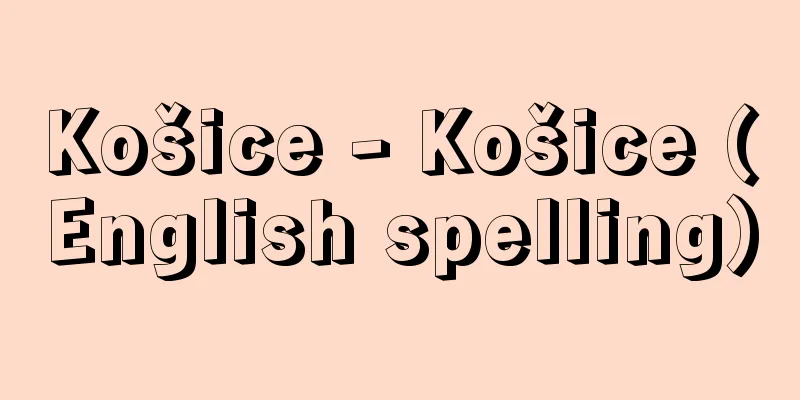Košice - Košice (English spelling)

|
The second largest city in Slovakia, Košice County is the capital of the eastern Slovakian county. It has a population of 236,093 (2001). It is located in the Košice Basin, and the Hornát River flows through the city. The city's largest industry is steel production by the East Slovak Steelworks, which was built in the 1960s, and other industries include machinery and food manufacturing. The city is also active in tourism development, with the Slánské Hills nature reserve nearby. In the city center is St. Alžveta's Cathedral, the largest Gothic building in Slovakia, surrounded by historical buildings such as the National Theatre, the Old Town Hall, and the Bishop's Palace. In terms of higher education institutions, there are three faculties of the P. J. Šafárik University (three in Prešov), the Technical University, the M. R. Štefánik Air Force University, as well as one faculty each at the University of Economics in Bratislava and the Agricultural University in Nitra. The city is the site of the Košice Marathon. [Kimura Hideaki] historyThe first mention of settlement in the city is in an ancient document from 1230, but it was not granted city rights until 1990. It became a free royal city in 1324, and in the 14th and 15th centuries, industries flourished, especially goldwork and textiles, and it also developed as a trading city. In the 16th and 17th centuries, it was an important base for the Kingdom of Hungary in its war against Turkey. It became part of Czechoslovakia under the Treaty of Trianon (1920), but was ceded to Hungary in the Vienna Award (1938), and after World War II, it became part of Czechoslovakia again. In 1945, a Czechoslovak Provisional Government led by President Beneš was established, and in May of the same year, the Košice Programme was announced, which became a guideline for the reconstruction of the nation. In 1993, Czechoslovakia separated into the Czech Republic and Slovakia, and became independent. [Kimura Hideaki] [Reference item] |Source: Shogakukan Encyclopedia Nipponica About Encyclopedia Nipponica Information | Legend |
|
スロバキア東部、コシツェ県の県庁所在地でスロバキア第二の都市。人口23万6093(2001)。コシツェ盆地に位置し、ホルナート川が市内を流れる。市最大の産業は、1960年代に建設された「東スロバキア製鉄所」による鉄鋼生産で、ほかに機械、食品工業が盛んである。近郊に自然保護区のスラーンスケ丘陵をひかえ、観光開発にも力が入れられている。市の中心部にはスロバキア最大のゴシック建築、聖アルジュベタ大聖堂があり、国立劇場、旧市庁舎、司教邸などの歴史的建造物がそれを取り囲んでいる。高等教育機関として、P・J・シャファーリク大学の3学部(プレショフに3学部)、技術大学、M・R・シチェファーニク空軍大学があるほか、ブラチスラバの経済大学とニトラの農業大学がそれぞれ1学部を設置している。コシツェ・マラソンの開催地。 [木村英明] 歴史1230年の古文書に市への定住に関する最初の記述があるが、市の権利を付与されたのは90年。1324年に王立自由都市となり、14~15世紀には金細工や織物を中心に産業が栄え、交易都市としても発展した。16~17世紀にかけ、ハンガリー王国の対トルコ戦重要拠点。トリアノン条約(1920)でチェコスロバキアに帰属したが、ウィーン裁定(1938)でハンガリーに割譲、第二次世界大戦後、ふたたびチェコスロバキア領になる。1945年、ベネシュ大統領率いるチェコスロバキア臨時政府が置かれ、同年5月に国家再建の指針となった「コシツェ綱領」が発表された。1993年、チェコスロバキアはチェコとスロバキアに分離、独立した。 [木村英明] [参照項目] |出典 小学館 日本大百科全書(ニッポニカ)日本大百科全書(ニッポニカ)について 情報 | 凡例 |
>>: Koshitsu - Ancient History
Recommend
kaval
...The dance is generally a round dance called ko...
Romanesque harp (English spelling)
…This is what C. Sachs called the Gothic type, wi...
Total reflection
When a ray of light is incident from medium 1 with...
Shimura ginseng (English name) Pterygopleurum neurophyllum (Maxim.) Kitagawa
A perennial plant of the Umbelliferae family that ...
Economic White Paper
The Cabinet Office submits an annual report on the...
Geanticline - Chihaisha (English spelling)
Based on the theory of geosynclinal orogeny, it i...
Hydrocharitaceae
...The "tochi" in "tochikagami&quo...
ITO (thin film) - ITO
...Ancient applications include anti-reflection f...
Mizogoi (Mizogoi) - Japanese night heron
A bird of the Heronidae family in the order Ciconi...
Most-favoured-nation treatment
In commercial treaties and agreements, this means...
Task force; mobile troops
Originally, the term referred to highly mobile uni...
Writ of execution - shikkoubun
A document that officially certifies that a debt i...
Great Hell - Ojigoku
...A horseshoe-shaped explosion crater formed by ...
Play on Children's Day - Play on Children's Day
During the Heian period, this was an outdoor pasti...
Nile crocodile - Nile crocodile
A crocodile of the family Crocodylidae, order Cro...





![Miwa [village] - Miwa](/upload/images/67ccf8797653f.webp)



